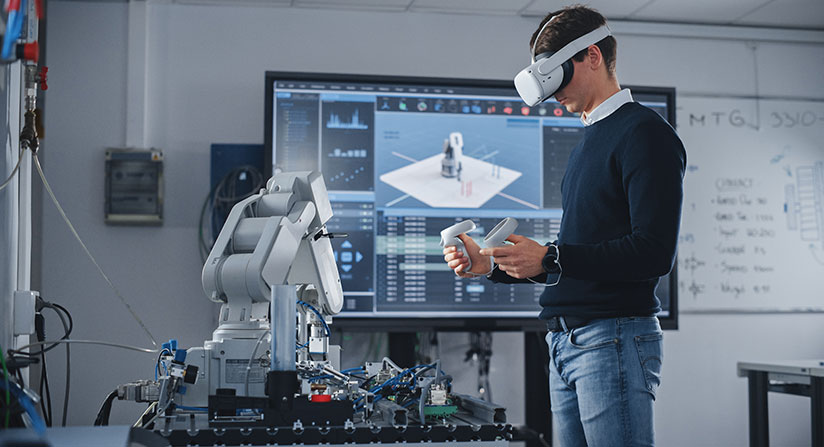In last week’s blog, we looked at quality assurance (QA) best practices for manufacturers. In that post, we touched on the fact that many use the terms quality assurance and quality control (QC) interchangeably, even though they represent different functions in the overall quality management process. As we noted then, a distinction between the two terms is that quality assurance is process-focused and quality control is product-focused. Another way to view the distinction is that QC is designed to discover flaws or defects in a product or process and QA investigates the root causes that led to those flaws and seeks to correct them.
Regardless of their differences, as two critical components in a discrete manufacturer’s quality management program, QA and QC work together to ensure the ongoing quality of finished products as well as the satisfaction and confidence of the customers who purchase them.
What is Quality Assurance (QA)?
Quality assurance is a proactive methodology that is initiated at the beginning of a manufacturing project and which serves as an indispensable tool in the mitigation of risks identified in the design phase. Its primary purpose is to prevent any defects or nonconformities that may occur in production. It is, in essence, a system designed to avert failure at every stage of the production process and to ensure success concerning product quality, product safety, and compliance with all legal guidelines.
QA involves some essential tasks such as data collection, problem trend analysis, process identification, and process analysis and process improvement. QA regimens also include inspection and testing plans, the selection of defect tracking tools, document controls, and the training of people in the applicable methodologies and processes involved.
What is Quality Control (QC)?
Quality control is a reactive methodology that is typically performed at the end of production stages and the very end of the production process before a product is shipped to a customer. On the macro level, QC is used to verify that products have been manufactured up to the expected quality standard. QC personnel are required to inspect or test finished products for any defects or other issues that can compromise quality. Interestingly enough, QC is not intended to ensure quality, but to identify when it’s lacking.
Often, manufacturers will perform QC checks at predetermined stages of production to ensure that all processes along the way are meeting customer requirements. Here are a few common examples of QC activities:
- Use of control measurements to analyze and evaluate quality standards and processes
- Completion of quality control assessments and audits
- Comparison of quality control measurements against established control limits and tolerances
- Identification of any non-compliance issues and the underlying root causes
This Quality Control vs Quality Assurance chart summarizes the differences well.
Essential QA Steps for Manufacturers
Tim Landerville laid out an excellent QA game plan for manufacturers aimed at raising customer satisfaction levels in his article 7 Essential Steps to Implementing a Process of Quality Assurance.
Step 1: Identify Organizational Goals
Start by defining how employees’ jobs and their roles are tied to your company’s goals and get them to buy-in.
Step 2: Identify Critical Success Factors
Identify which factors of your company’s QA system are essential to success. These may include a well-designed production process, high-quality product, technical/customer support, or employee satisfaction, to name a few.
Step 3: Identify Key Customer Groups
Identify the key groups of customers and tailor your QA program to meet their needs and expectations.
Step 4: Customer Feedback
Consistent customer feedback enables organizations to detect and solve quality problems before they arise, thus ensuring successful quality management.
Step 5: Implement Continuous Improvements
Utilize customer feedback to continuously upgrade your company’s QA program. This could entail more leadership development, customer service training, revisions to the production process, etc.
Step 6: Select Quality Management Software
Select software that provides the tools you need to maintain a successful QA program.
Step 7: Measure Results
Use tools that measure the success, for example, positive ROI, of your company’s QA program. Documentation of these results enables management to see the positive effect this program has on the company’s bottom line.
Essential QC Steps for Manufacturers
The MyMG team outlines a series of consecutive steps that will help manufacturers implement a successful QC program in their article “Quality Control Activities – Ensuring that Deliverables Comply with Quality Requirements”.
- Gather and analyze quality control measurements (these are results of quality control activities used to review and evaluate the quality standards and production processes)
- Identify and audit non-conformance of project results
- Suggest corrective and preventive actions and recommend quality improvements (through sending change requests that are applied to the quality management plan)
- Validate procedures for fault elimination
- Review the results of corrective actions and produce quality control reports
The following quality control tools can be used to support the project manager’s effort
- Cost-benefit analysis – comparing the cost of the quality control process to the expected benefit
- Control charts – determining whether a selected product process is stable within predefined limits
- Benchmarking – measuring current project processes against other projects
- Design of experiments – determining influential factors on a selected process
- Six Sigma – identifying and eliminating causes of faults and errors to improve the quality of process outputs
- Cost of quality – investigating cost amounts incurred for supporting current quality levels, including the cost of compliance and cost of non-compliance
Even though the two terms are often used interchangeably they are very different and distinct. Quality Assurance is about the process and Quality Control is about the product. But both are required to ensure that finished goods meet the rigorous and exacting quality standards that customers and consumers expect.
Find out how OptiProERP’s manufacturing ERP software can help you achieve better Quality Assurance and Quality Control practices.
Follow Us





